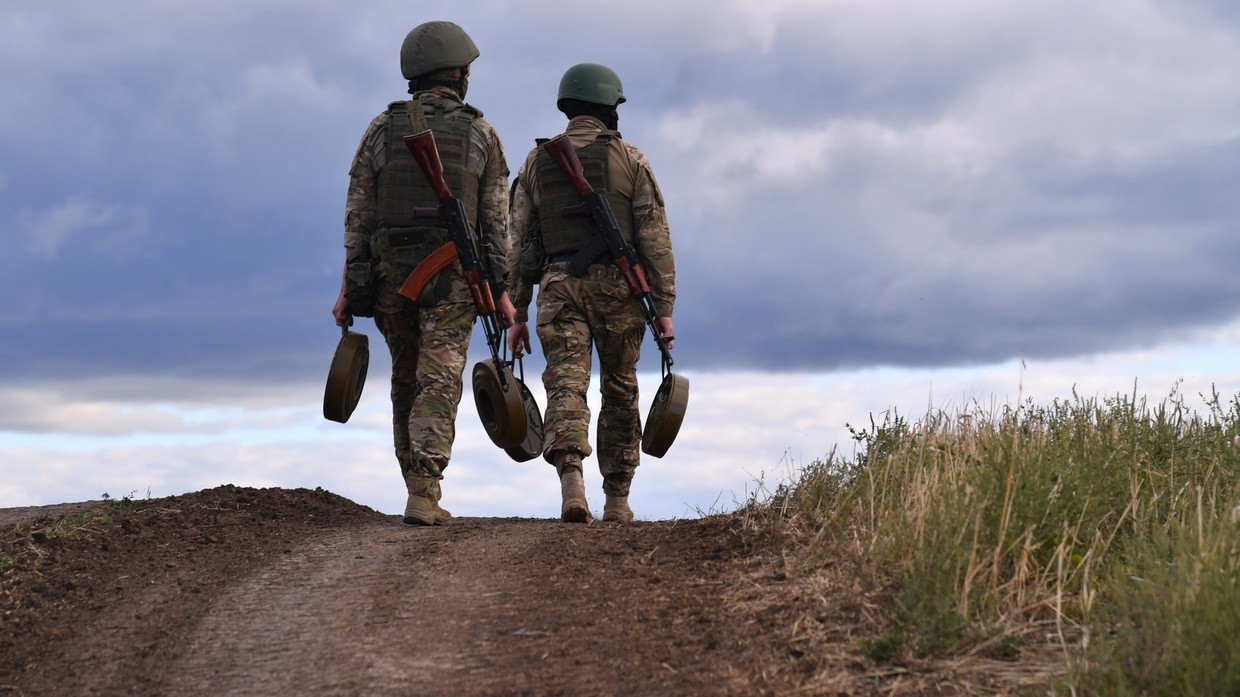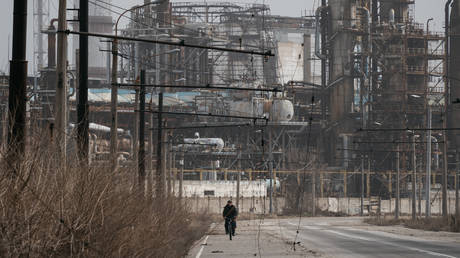Since February of last year, when Russia launched its military offensive in the country, mine explosions have killed about 200 civilians in Ukraine, while hundreds more have been injured.
The UN has already called Ukraine the most heavily mined state in the world. Yet the contamination continues to grow because of how positional warfare is carried out. With the conflict far from over, the further laying of explosives could have disastrous consequences.
Deadly traps
Official reports claim that 250,000 square kilometers (almost 62 million acres) of Ukrainian territory have been mined. This is equal to the entirety of the UK (244,000 square kilometers). According to Prime Minister Denis Shmigal, his country has become the world’s largest minefield, which has even spurred the government to create a special center to deal with the fallout.
Experts believe that the situation in Ukraine is worse than in Afghanistan and Syria. The number of unexploded ordnance, anti-personnel, anti-tank, and other mines and explosive shells is estimated to be in the millions of units.
Meanwhile, Ukraine’s minefields are growing exponentially. In the past year, the entire length of the front line on both sides has been mined. They are often laid in a scattered manner and without mapping. Given Ukraine’s large size, this greatly complicates the process of finding and neutralizing them.
“Indeed, there is a chance that the mined territories may expand further, both due to the prolongation of the conflict and the likely offensive from either side, which may move hostilities to previously unaffected territories,” Maxim Semenov, a political analyst and specialist in conflicts in the post-Soviet space, told RT.
Official sources also report that the contaminated area is expanding. Last summer, the Ukrainian Deminers Association stated that minefields covered about 133,000 square kilometers of Ukraine, but the number recently announced by Shmigal is already double that.

Meanwhile, there are no solutions that can be totally effective, and most importantly, quick and simple. Demining is the exclusive job of sappers. For example, back in the 2000s, an average of 50 people a day were blown up on anti-personnel objects in Angola, one of the most heavily mined countries in the world. To this day, about 500,000 explosive devices remain, despite the fact that dozens of sapper units from all around the world have helped out in the country. It’s also worth noting that both the fighting and the scope of contamination in Angola were a lot less severe than in Ukraine.
“We should note the experience of African and Asian countries, and even of the Soviet Union, where, decades after the end of war, mine explosions occasionally happened. It is impossible to provide guarantees that an area is completely clear of mines. The army may not make maps of minefields, as has been the case with the Armed Forces of Ukraine in Donbass since 2014. Or the maps may be inaccurate, they may get lost, etc. All this complicates the work of the sappers,” notes Semenov, adding that even decades after an area is cleared, mines can still pop up in the most unexpected places. Even sappers cannot guarantee that all mines and shells are found and cleared.
For war-affected regions, this creates enormous problems in the transition to peacetime life, not to mention the possible deaths of civilians and challenges in normalizing the economy. “[This concerns] both agriculture, the industrial sector, and infrastructure. The Armed Forces of Ukraine have been known to mine civilian objects, as for example, in Mariupol, where Russian sappers are still clearing plants, residential buildings, and courts,” the expert added.
In other words, it may take decades. Back in June of last year, Ukraine’s then-Interior Minister Denis Monastyrsky said that partial demining would take from five to ten years.
So far, this problem remains in the background because of Ukraine’s total media censorship, the focus on news reports from the front, and people’s understandable desire to stay away from the fighting. But when the heated phase of the armed conflict comes to an end or if the conflict becomes frozen, the problem will emerge as a key issue.
Danger levels
A year ago, the Kiev, Kharkov, Chernigov, and Sumy regions (Ukraine’s north and east parts) were the most heavily mined areas. But now, it’s the eastern and southern regions. “We are currently most active in the Kherson region. Eight thousand square kilometers need to be cleared of mines, of which seven thousand are in the Kherson region, and about 1.5 thousand in the Nikolaev region,” said Sergey Kruk, head of the State Emergency Service of Ukraine, in November of last year.
The war-affected areas can be divided into several categories according to the danger levels posed by the mines.
The highest danger level remains in the Donbass region. Its territory has been strewn with mines since the beginning of the armed conflict in 2014. Fishermen and children regularly fall victim to mines in Lugansk, and mushroom pickers suffer the same fate near Slaviansk. Some of these were laid almost ten years ago. Moreover, the bloodiest battles are now taking place in Donbass, which makes it one of the most heavily mined regions on the planet. Sappers from the Russian Armed Forces who neutralize explosive devices in Mariupol believe that the area will remain dangerous for several generations of residents.
A high level of danger also remains along the current front line from the Kharkov to the Zaporozhye regions, as well as along the line of contact in the Kherson region. In these areas, military expediency accounts for most of the mines. The longer the front remains static at some point, the deeper inland the mined areas spread.
The situation is particularly severe in the Kharkov region, where the frequently shifting front lines lead to intensive mining on both sides. The director of Human Rights Watch's Arms Division, Stephen Goose, has noted that the Armed Forces of Ukraine scattered so-called ‘petal mines’ “across a vast area near the city of Izyum, which led to civilian casualties and still poses a serious threat.”
A heightened threat also remains at the locations of the first battles – namely, in the Kiev, Zhitomir, Chernigov, and Sumy regions. These areas stand apart from the other regions for two reasons. Firstly, at the initial stage of the conflict, the fighting did not yet take on the form of positional warfare. Since the battles were fast-paced, there was no need for heavy mining. Secondly, the mining was mostly carried out by the Armed Forces of Ukraine, and therefore it will be much easier for the Ukrainian side to clear their own mines. However, residents of these regions are maimed on mines almost every day.
A low level of danger remains along the entire perimeter of the Russia-Ukraine and Belarus-Ukraine borders. Late last year, the chairman of the State Border Committee of Belarus, Lieutenant General Anatoly Lappo, said that Ukraine had blown up almost all of the border bridges and mined roads on the Ukraine-Belarus border. “Up to the point that they laid anti-tank mines in three rows on the roads,” the official said. This is backed by the State Border Service of Ukraine, which confirmed the border territories as “mined”.
The rest of Ukraine’s territory is relatively clear. In those places, people can still go fishing and enjoy picnics, pick mushrooms, plant potatoes in their garden, and just walk around freely. However, ‘the rest of Ukraine’ has shrunk to a mere half of the country. Even people who used to go to the sea – to Odessa, for example, are in no hurry to do so, since the entire coast is densely mined.
Overcoming danger
Every single day is a test of fate for civilians. Danger is hidden everywhere. Agricultural workers are at an even greater risk and are particularly concerned about the endless minefields. During seasonal farm work, every step could be their last.
Farmers cannot cultivate fields, as mines create serious problems for agriculture, which is one of the main sectors of the Ukrainian economy. Before the outbreak of active hostilities, Ukraine accounted for nearly 10% of the world grain market. The country was also among the biggest producers of sunflower seeds, corn, and other crops. Now, many of the fields have been mined and may be left unused, at least in the short term.
Based on the analysis of satellite images, last year the US space technology company Maxar concluded that Ukraine may achieve only half of its usual grain harvest. In 2022, farmers sowed 30% fewer fields than in 2021. In 2023, the harvest of grain and leguminous crops will decrease by another 17% compared to last year.
Currently, the hardest hit region is Kherson, where minefields will affect the planting of gourds. “In the Kherson region, unfortunately most of the territories are mined, the fields are damaged by shells, and it will take time to demine the area. However, onions, watermelons, and cantaloupes will be planted in the Odessa region and in parts of the Kirovograd region," said Dmitry Solomchuk, a member of the Verkhovna Rada Committee on Agrarian and Land Policy, in March of this year.
Beets, carrots, and potatoes will be planted in Ukraine’s western and central regions. Agricultural farms are focusing on planting vegetables in order to avoid shortages and low export indicators.
About a million hectares of Ukraine’s agricultural land are contaminated with mines and unexploded ordnance. “The minefields will definitely have a negative impact on land turnover and the production of agricultural goods. A lot of the fighting is taking place on so-called ‘chernozem’ lands – that is, areas with the most fertile soil. This will greatly restrict the region’s agricultural potential and reduce Ukraine's share in the world grain market not only this year, but also in the coming years," Maxim Semenov added.
***
For obvious reasons, no one can predict how long it will take to completely demine Ukraine. But it is clear that even after the conflict is over, its horrific legacy will remain in the form of landmines and explosive ordnance scattered all around the country. For decades to come, this will doubtlessly remain one of the biggest concerns for the country.


